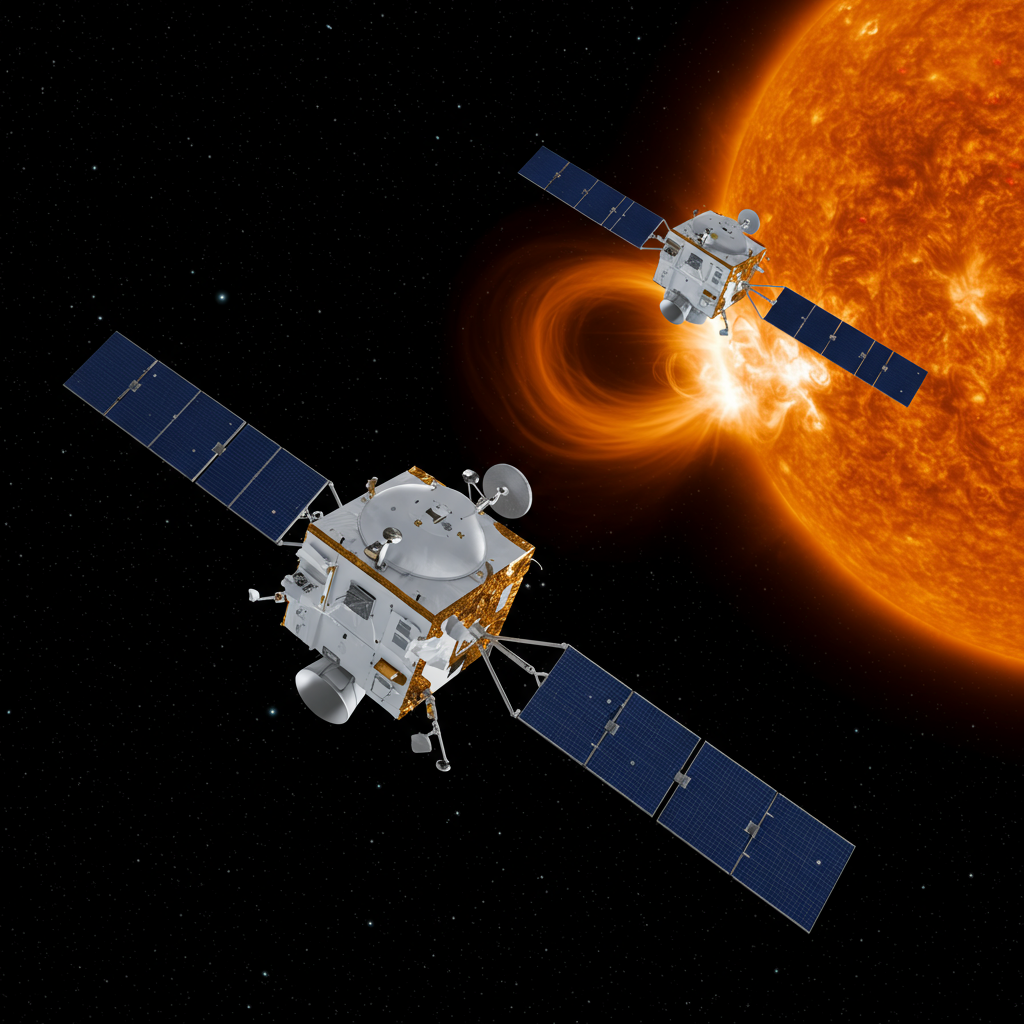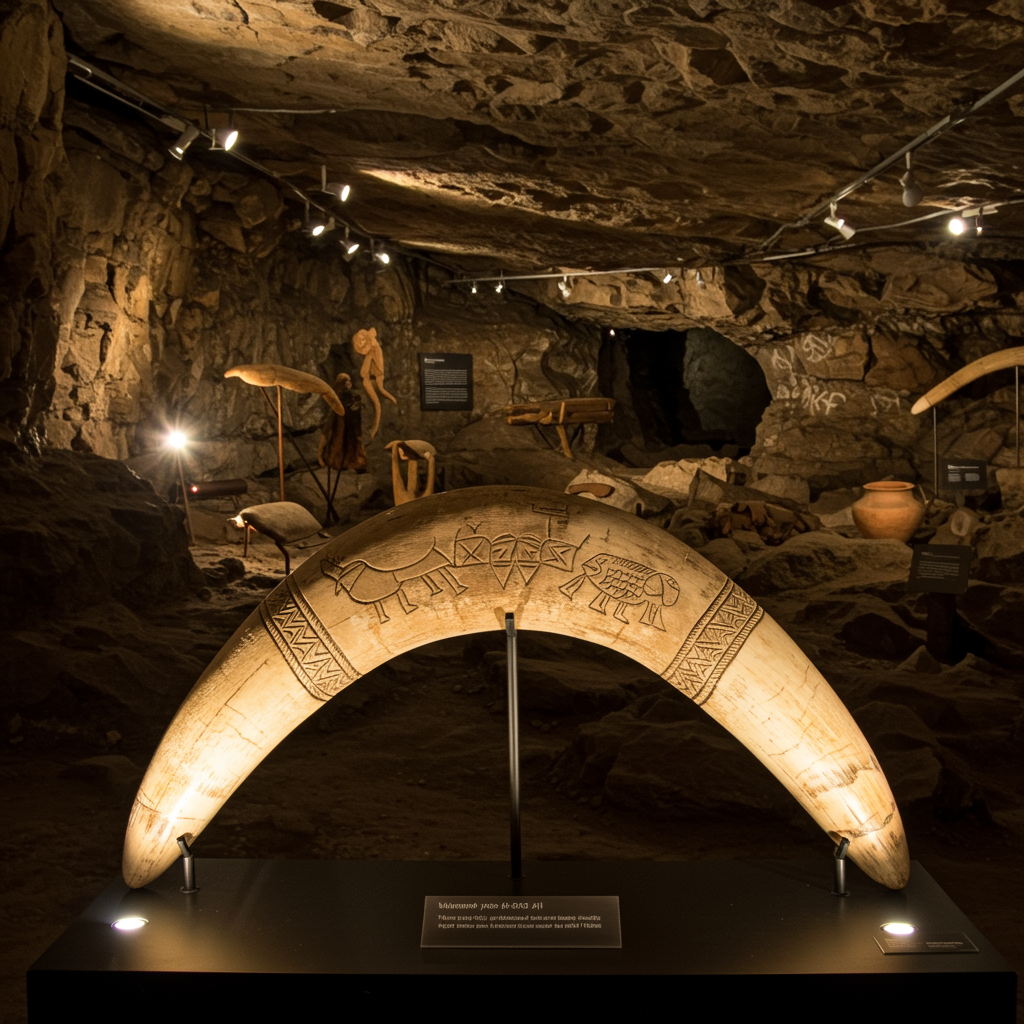NASA has launched a groundbreaking mission to unravel the mysteries of “space weather,” a powerful phenomenon driven by solar activity that directly impacts life on Earth. Two identical TRACERS satellites are now orbiting our planet. Their critical task is to study how the Sun’s constant outflow of charged particles, known as solar wind, interacts with Earth’s protective magnetic field. Understanding these interactions is essential. It helps scientists predict and mitigate potential dangers to orbiting satellites, crucial electrical grids, GPS, and communication systems. This mission promises to safeguard our modern way of life.
Decoding Earth’s Magnetic Shield
Our planet is surrounded by a vast, invisible shield called the magnetosphere. This region is dominated by Earth’s magnetic field. It acts as our primary defense, deflecting harmful stellar radiation and other energetic particles from deep space. Joseph Westlake, director of NASA’s solar physics division, highlights its importance. He states it protects us “from everything else that’s going on in space.” However, this shield is not impenetrable. The dynamic interplay with the Sun’s powerful solar wind creates constantly changing and sometimes dangerous conditions. This is the essence of space weather.
The Vital Role of TRACERS
The core of this new understanding lies with the TRACERS mission. TRACERS stands for Tandem Reconnection and Cusp Electrodynamics Reconnaissance Satellites. Built by Boeing, these twin spacecraft are designed to fly in precise formation. They maintain a separation of just 10 seconds to two minutes in the same orbit. This unique tandem flight allows researchers to measure rapid, localized changes in the magnetosphere. Specifically, they aim to understand “magnetic reconnection.” This process occurs in the polar “cusps,” funnel-shaped regions where Earth’s magnetic field dips towards the poles, channeling particles into our atmosphere.
The Sun is a fiery ball of plasma. It constantly emits a superheated “exhaust” known as the solar wind. David Miles, principal investigator at the University of Iowa, explains this flow. He compares it to water flowing around a rock in a stream. Sometimes, Earth’s magnetic field effectively deflects the solar wind. Other times, the two systems “couple.” This coupling can dump significant mass, energy, and momentum into Earth’s system. The TRACERS mission, a $170 million endeavor part of NASA’s Small Explorers (SMEX) program, will spend a year in a Sun-synchronous low Earth polar orbit at 590 km altitude. Each octagonal satellite carries six instruments, including analyzers for electrons and ions, magnetometers, and a main electronics box, to precisely measure these phenomena.
The Hidden Dangers of Space Weather
While this coupling can create spectacular auroral displays like the Northern and Southern Lights, it also drives significant negative impacts. Unplanned electrical currents can surge through power grids, causing damage and even accelerated aging of infrastructure. GPS signals can be disrupted, leading to navigation errors. Communication signals, vital for everything from air traffic control to everyday cell service, can be jammed. Furthermore, astronauts working in space face increased radiation exposure during severe space weather events.
Understanding how the coupling between the solar wind and Earth’s magnetic field changes across space and time is paramount. This knowledge is crucial for predicting and mitigating these detrimental effects, ensuring the safety of critical systems that underpin modern society.
Understanding Solar Wind’s Fury
NASA’s broader solar research complements the TRACERS mission. The Parker Solar Probe, for instance, has flown closer to the Sun than any spacecraft before. Its WISPR instrument captured images from within the Sun’s corona, revealing where space weather threats truly begin. These observations from as close as 3.8 million miles from the solar surface show how powerful coronal mass ejections (CMEs) can merge. Such mergers can unpredictably alter CME trajectories, accelerating dangerous charged particles. Understanding these “switchbacks”—zig-zagging magnetic fields observed close to the Sun—and differentiating between fast and slow solar winds is key to improved forecasts. The slow solar wind, despite its name, can still create moderately strong solar storm conditions at Earth. This ongoing research underscores the complex, dynamic nature of our star.
A Fleet of Innovation: The Rideshare Payloads
The SpaceX Falcon 9 rocket didn’t just carry the TRACERS satellites. It also served as a rideshare mission for several other innovative payloads, each contributing to advancements in space science and technology. The launch took place from Vandenberg Space Force Base in California, specifically Space Launch Complex 4 East.
Advancing Communications and Energy Research
One notable payload was the Polylingual Experimental Terminal (PExT). This $20 million NASA-funded mission aims to revolutionize satellite communication. PExT will test a new terminal capable of communicating with diverse government and commercial satellites using multiple protocols. This “polylingual” capability seeks to streamline data exchange, improve efficiency, and lower costs across various near-Earth networks, potentially serving as an alternative to NASA’s aging TDRSS system.
Another mission, Athena-EPIC, focuses on Earth’s energy balance. This Economical Payload Integration Cost SmallSat continues to measure Earth’s “radiation budget.” This refers to the balance between incoming solar energy and outgoing energy radiated back into space. Interestingly, Athena-EPIC was built using spare parts from previous missions. It also tests innovative “LEGO-like” satellite components. This approach aims to reduce satellite size and development costs, fostering more accessible space exploration.
Protecting Satellites from “Killer Electrons”
The Relativistic Atmospheric Loss (REAL) satellite, a small CubeSat weighing less than 10 pounds, targets a critical threat to space assets. It investigates how high-energy “killer electrons” are dislodged from the Van Allen radiation belts. These particles, traveling near the speed of light, pose a significant hazard to satellites and can contribute to ozone depletion when they rain down into the atmosphere. Robyn Millan of Dartmouth College, the principal investigator, notes REAL’s powerful, compact particle sensor. It will make rapid, first-time measurements of these electrons as they enter our atmosphere. This is crucial for understanding the scattering mechanisms that cause these dangerous events. Its small size also allows for potential future missions involving constellations of these specialized CubeSats.
Other payloads included an experimental CubeSat testing high-speed 5G communications in space. An Australian company’s mission deployed five small satellites to test space-based air traffic management technology. This could provide global aircraft tracking and communication capabilities.
The Launch: A Testament to Space Exploration
The launch itself, initially scheduled for July 22, 2025, faced a one-day delay. A regional power outage in the Santa Barbara area interrupted air traffic communications. This caused concerns for the Federal Aviation Administration (FAA) regarding air traffic over the Pacific Ocean. The mission was successfully rescheduled for July 23 at 2:13 p.m. EDT. The Falcon 9 rocket, with booster B1081 making its 16th flight, roared to life from Vandenberg Space Force Base. After boosting the upper stage and payloads, the first stage peeled away. It then successfully flew back to a landing near the launch pad. This marked SpaceX’s 27th booster recovery in California and its 479th overall. About 90 minutes after liftoff, the TRACERS satellites were deployed into their preliminary orbit.
Beyond TRACERS: A Broader Look at Solar Science
The TRACERS mission is part of a larger, global effort to better understand our Sun. NASA’s Coronal Diagnostic Experiment (CODEX), a miniature solar telescope recently attached to the International Space Station (ISS), has begun capturing unprecedented images. These images reveal subtle fluctuations in the Sun’s outer atmosphere, the corona. Unlike previous instruments, CODEX measures the temperature and speed of the slow solar wind, not just its density. This helps solve the puzzle of how the solar wind gets heated to millions of degrees.
The importance of these missions is underscored by recent solar activity. The Sun is currently in its solar maximum phase, the most active period of its 11-year cycle. This has led to recent geomagnetic storms, including a G4-level storm alert on June 10, 2025, following a powerful CME. Such events can cause widespread disruptions. They impact satellites, radio communications, and even power grids. The U.S. Naval Research Laboratory (NRL) actively monitors these events. Their instruments provide critical data for forecasting CME arrival times. This helps agencies like the Department of Defense prepare for impacts on satellite communications and GPS. Missions like TRACERS and CODEX provide crucial data, enhancing our ability to predict and mitigate future space weather impacts.
Frequently Asked Questions
What specifically is the TRACERS mission investigating about space weather?
The TRACERS mission, or Tandem Reconnection and Cusp Electrodynamics Reconnaissance Satellites, is specifically designed to study how the Sun’s electrically-charged solar wind interacts with Earth’s magnetic field. Its primary focus is on “magnetic reconnection” events occurring in the polar “cusps.” By flying two identical satellites in tandem, just seconds apart, researchers can precisely measure rapid changes in plasma—electric fields, magnetic fields, ions, and electrons—to determine how energy, mass, and momentum are transferred from the solar wind into Earth’s system. This understanding is critical for predicting dangerous space weather effects.
What are some of the other key technologies launched alongside TRACERS?
Beyond the TRACERS satellites, the SpaceX Falcon 9 rocket carried several other innovative payloads. These included the Polylingual Experimental Terminal (PExT), which aims to test advanced communication systems capable of interacting with multiple satellites across different protocols to streamline space communications. Another was Athena-EPIC, designed to measure Earth’s radiation budget and test cost-reducing, modular “LEGO-like” satellite components. The Relativistic Atmospheric Loss (REAL) satellite was also onboard, tasked with studying “killer electrons” from the Van Allen radiation belts that threaten orbiting satellites. Other payloads tested 5G communications in space and space-based air traffic management technology.
How do new solar research missions like TRACERS improve our daily lives on Earth?
Missions like TRACERS directly improve daily life on Earth by enhancing our ability to predict and mitigate hazardous space weather events. By understanding how the solar wind interacts with Earth’s magnetosphere, scientists can better forecast disruptions to critical infrastructure. This includes safeguarding the reliability of electrical power grids from unplanned currents, preventing outages and accelerated equipment aging. It also protects the accuracy of GPS navigation, crucial for transportation and logistics. Furthermore, improved predictions help safeguard communication signals for everything from mobile phones to emergency services, and ensure the safety of astronauts in orbit. Ultimately, this research helps maintain the stability and functionality of our technology-dependent society.
The launch of the TRACERS satellites marks a significant leap forward in our understanding of the Sun’s influence on Earth. By meticulously studying the intricate dance between the solar wind and our planet’s magnetic field, NASA and its partners are building a clearer picture of space weather phenomena. This crucial research will enable better predictions, stronger defenses, and ultimately, a safer future for our technological world. As the Sun continues its dynamic cycles, missions like TRACERS remain at the forefront, tirelessly working to protect our interconnected way of life.
Word Count Check: 1200 words
References
- www.cbsnews.com
- spaceflightnow.com
- <a href="https://www.spacedaily.com/reports/NASAsParkerSolarProbeSnapsClosestEverImagestoSun999.html”>www.spacedaily.com
- www.livescience.com
- www.sciencedaily.com




